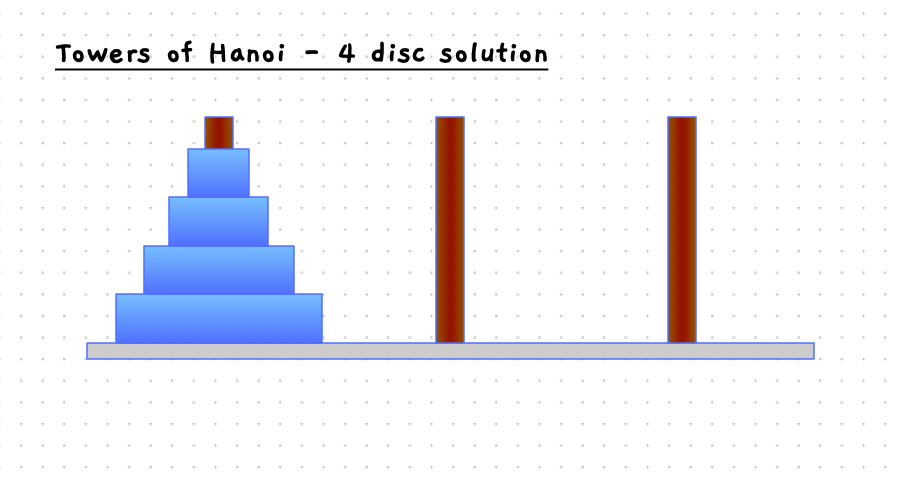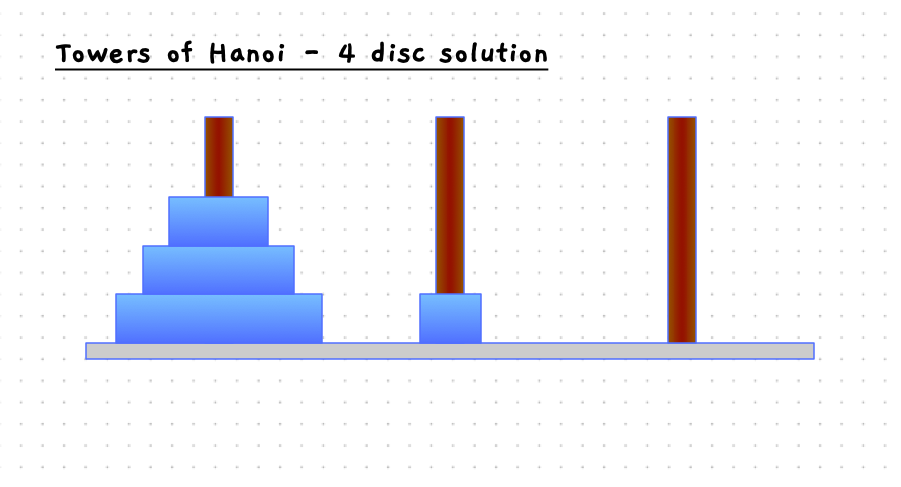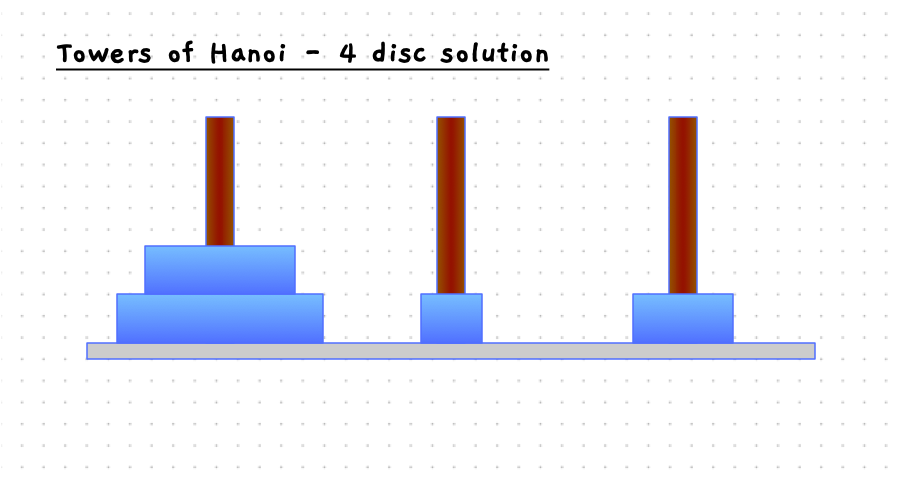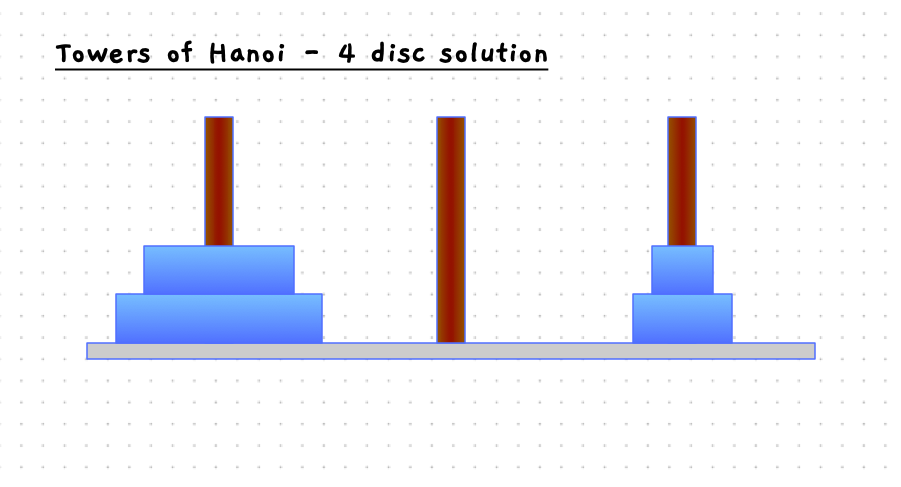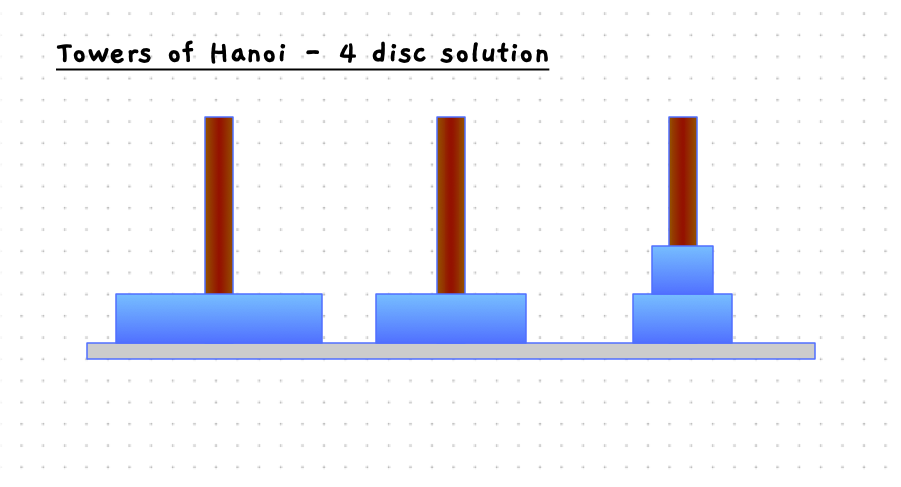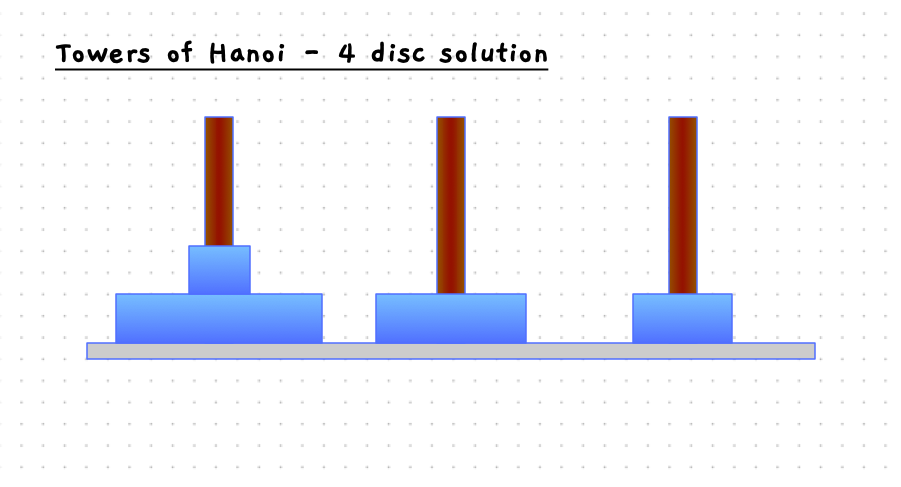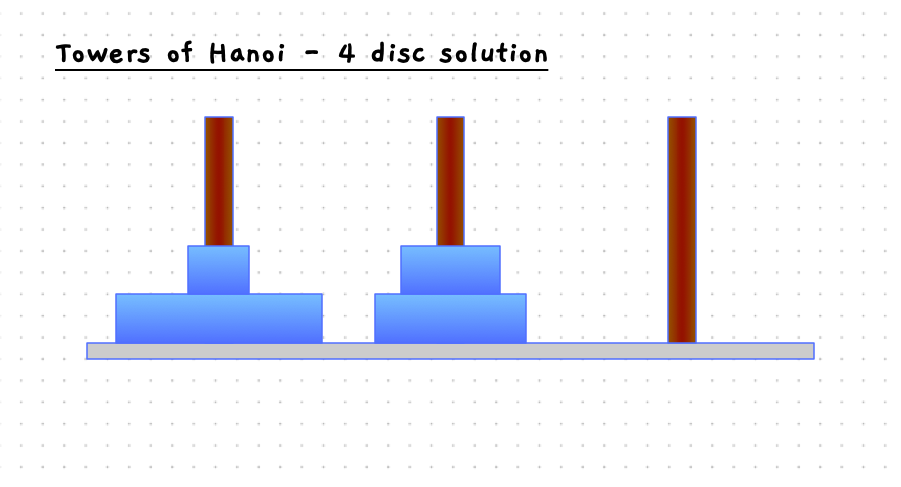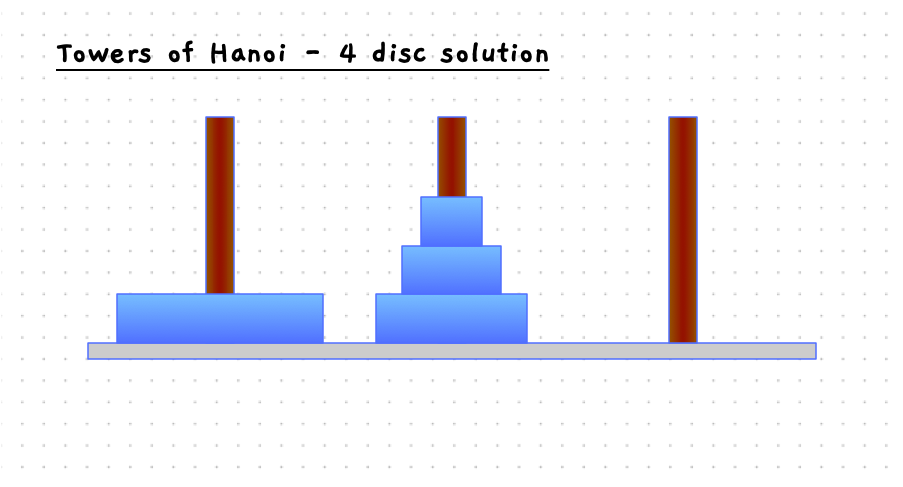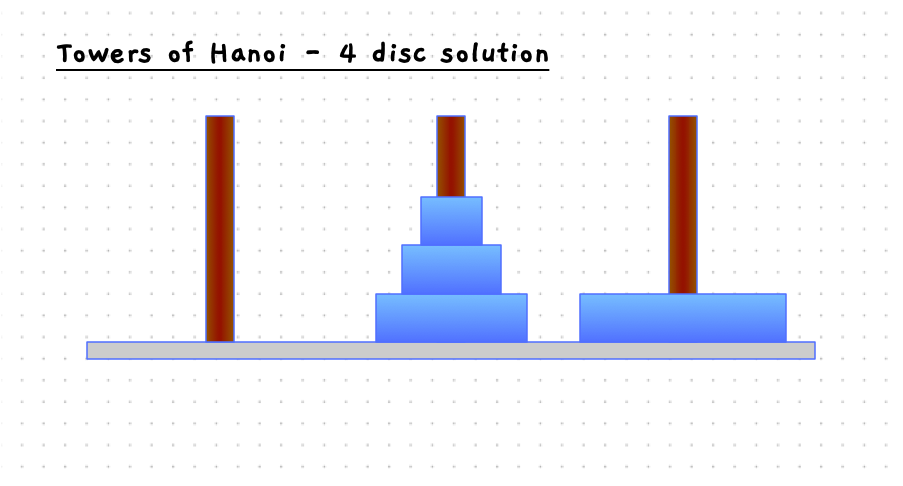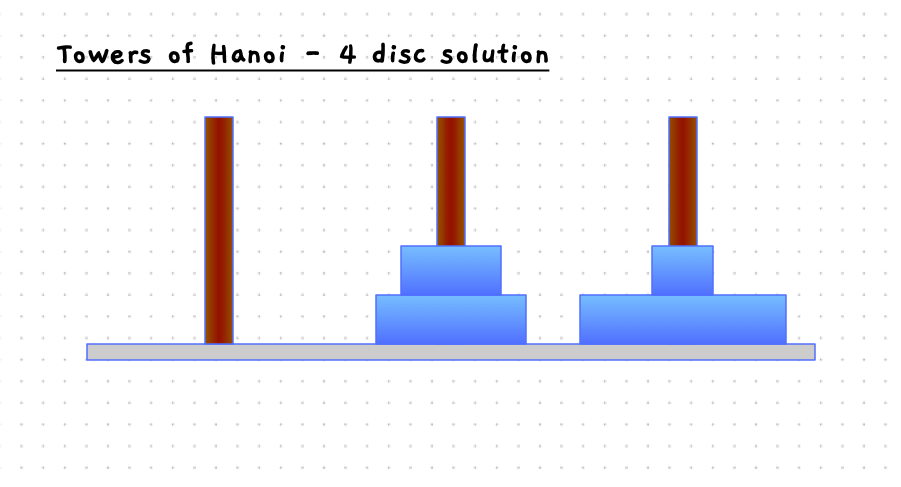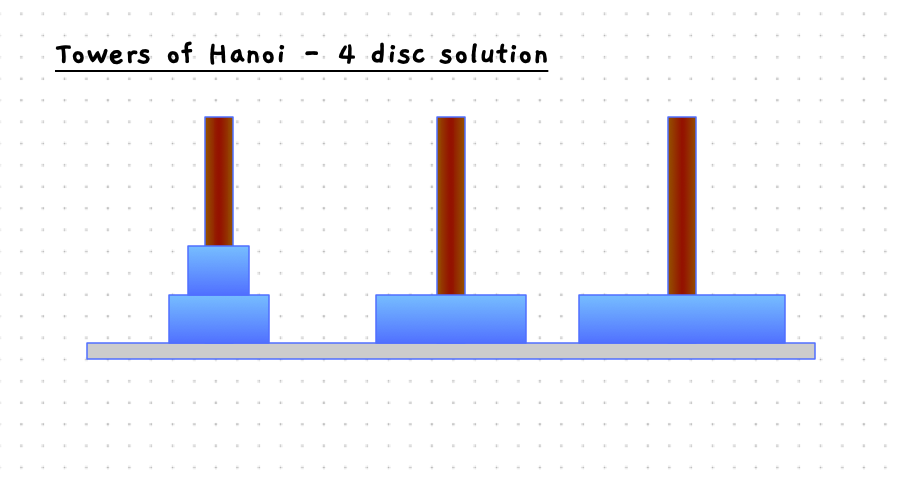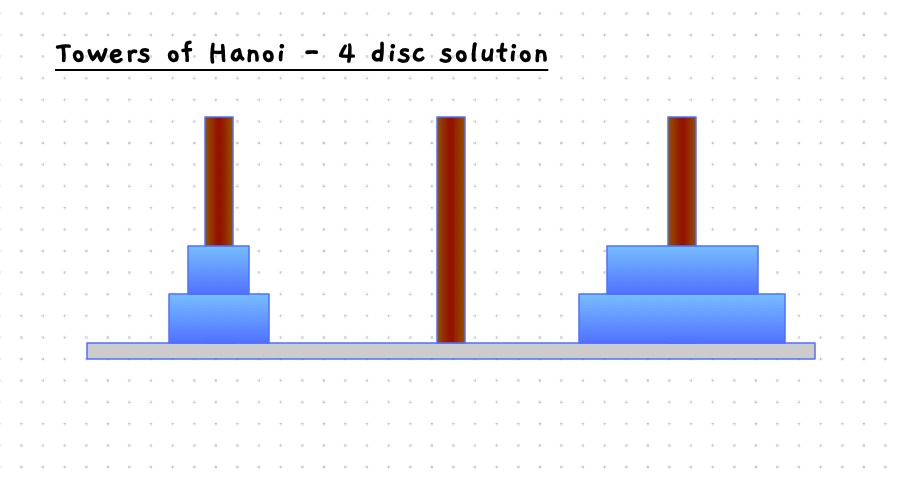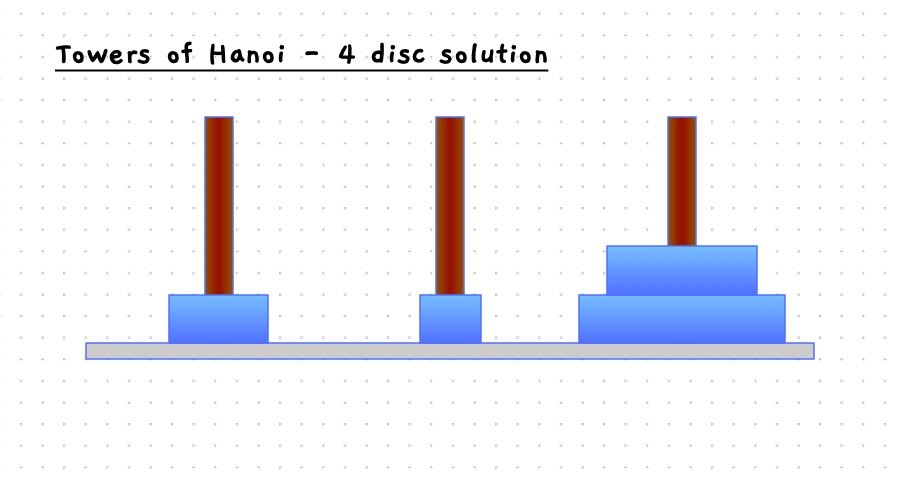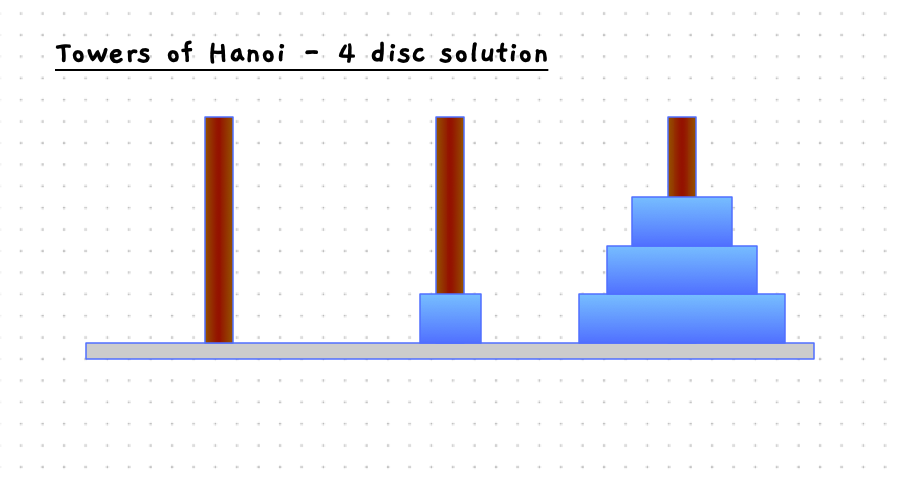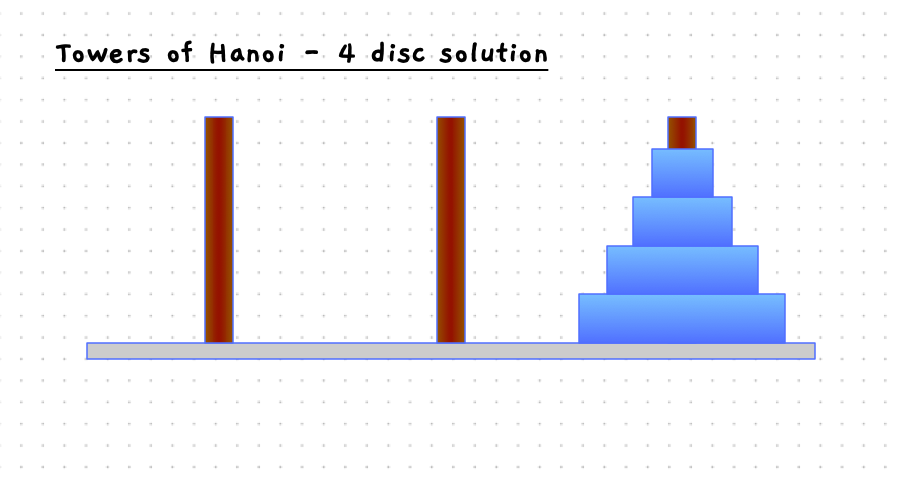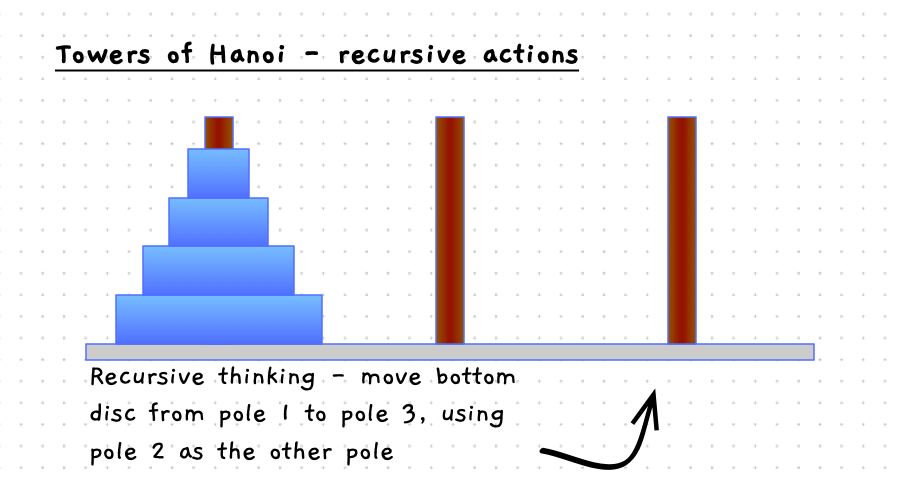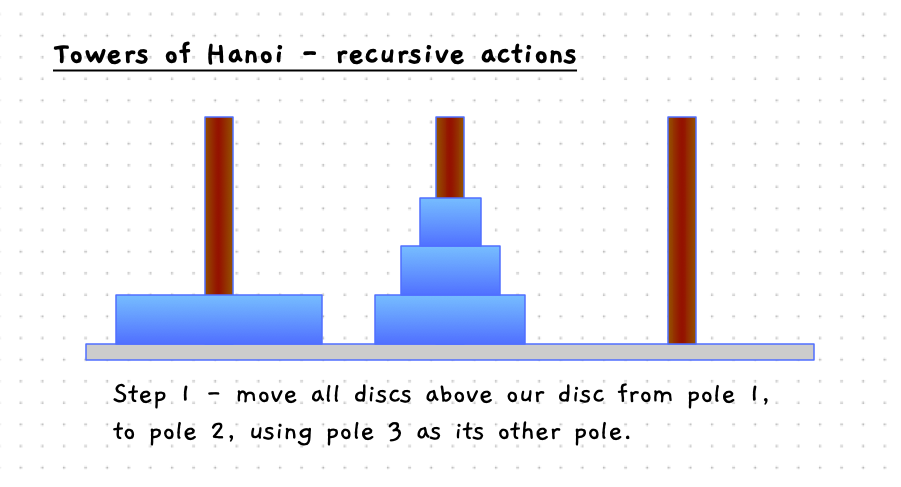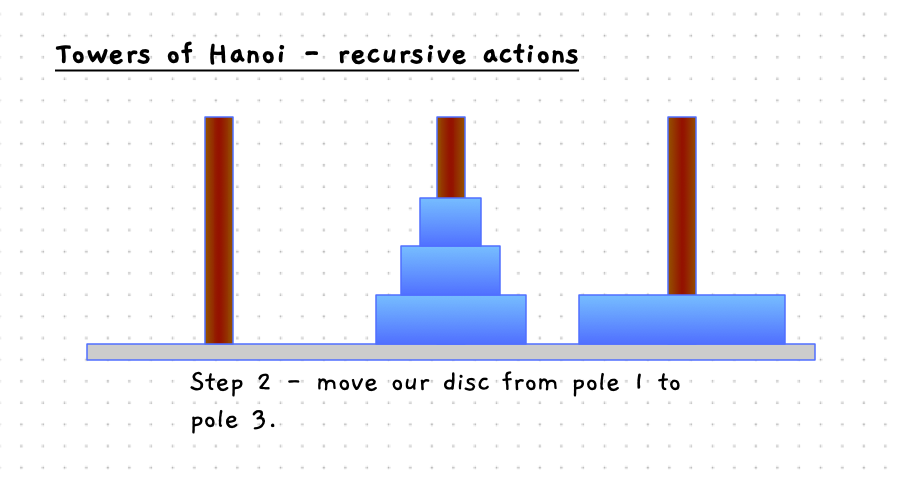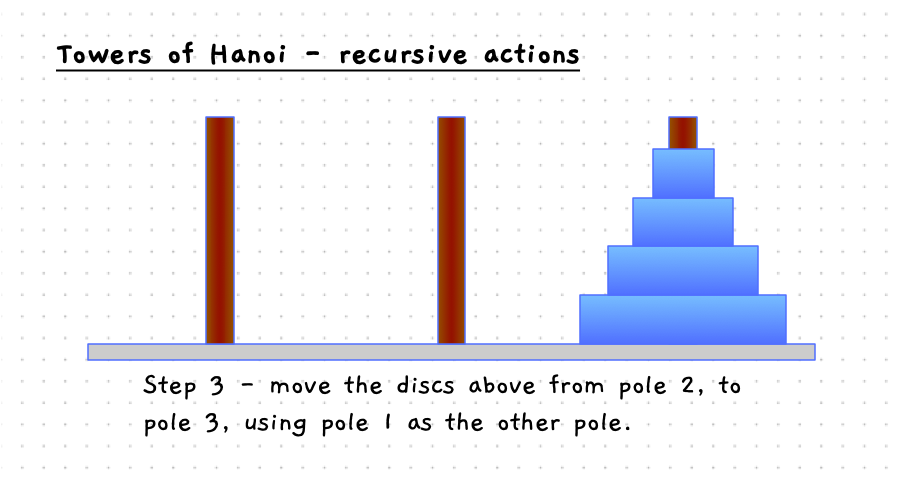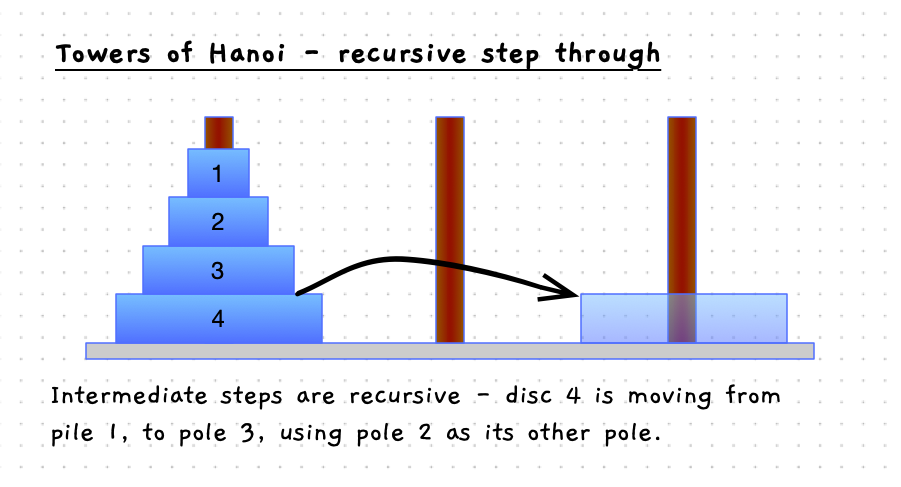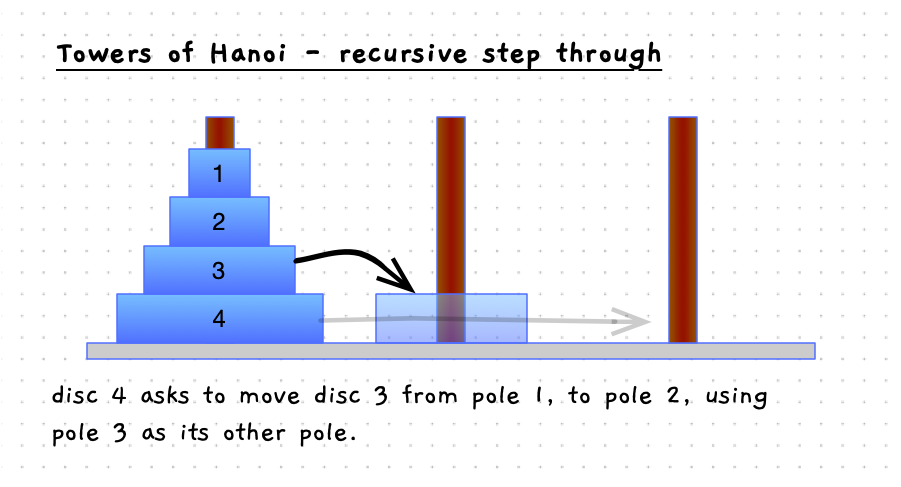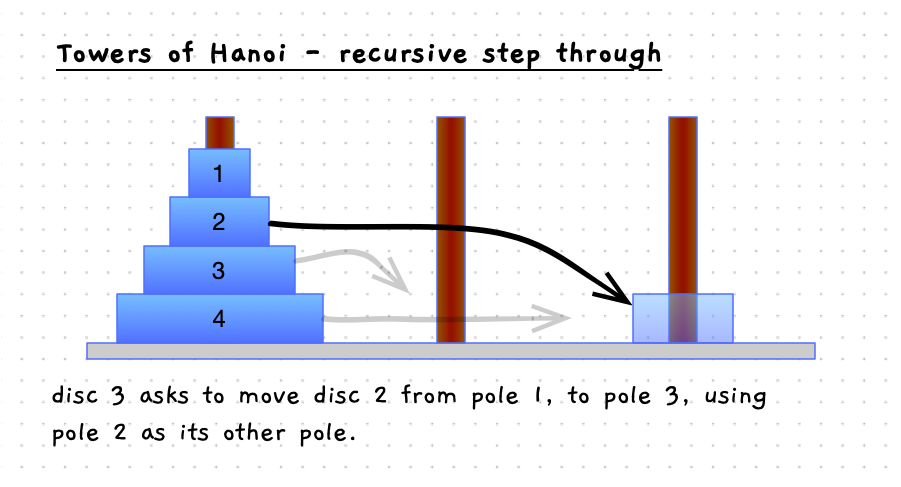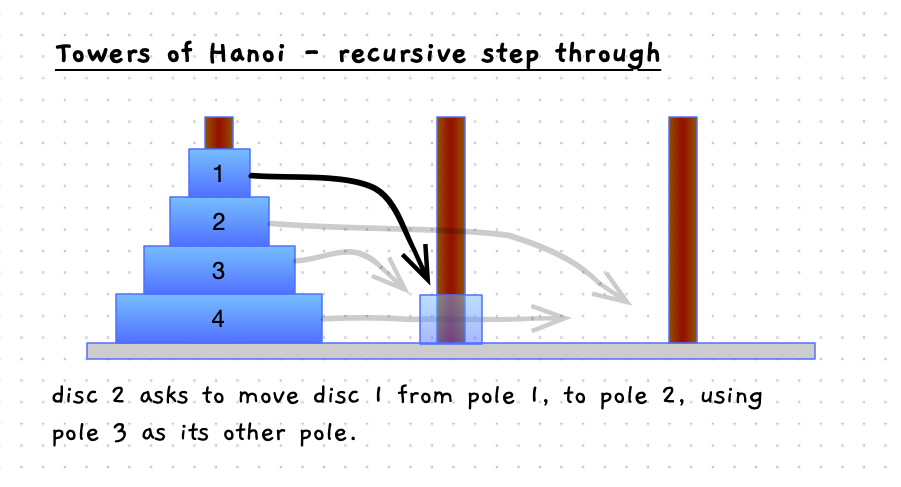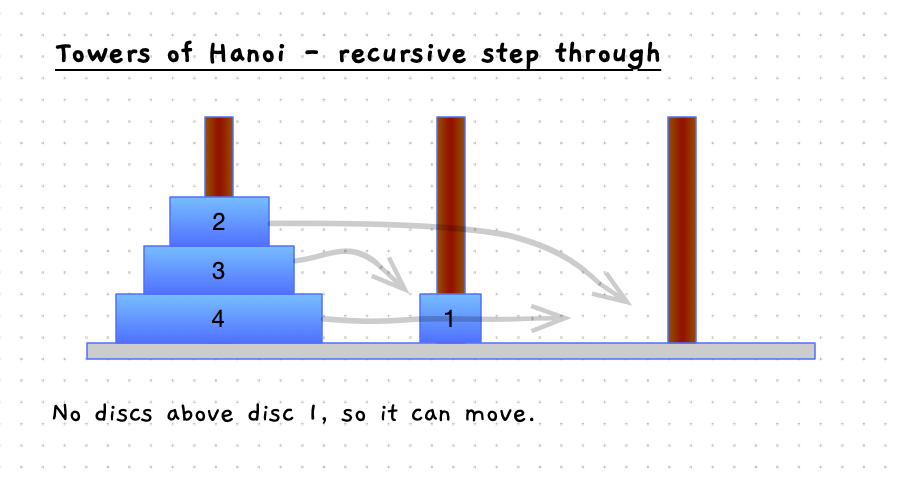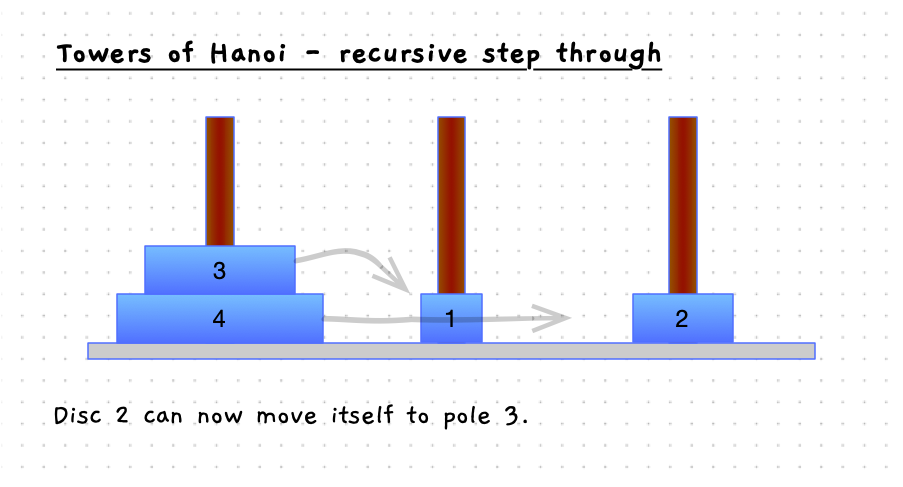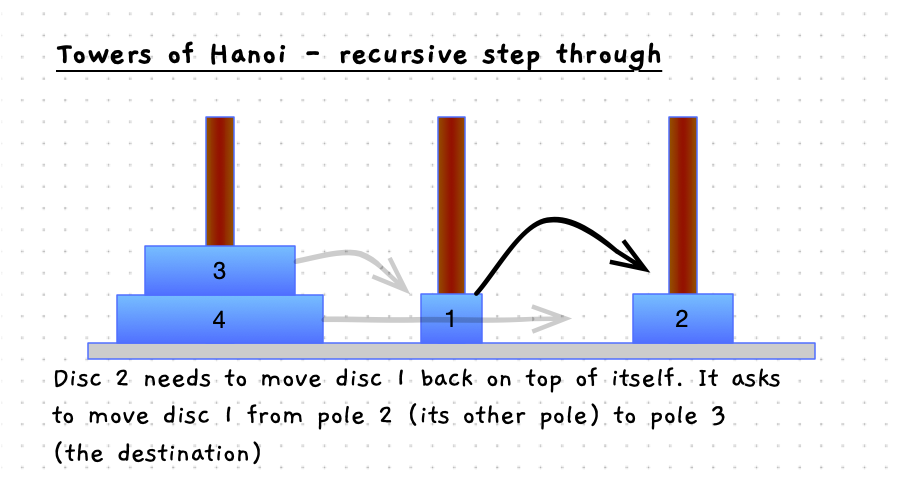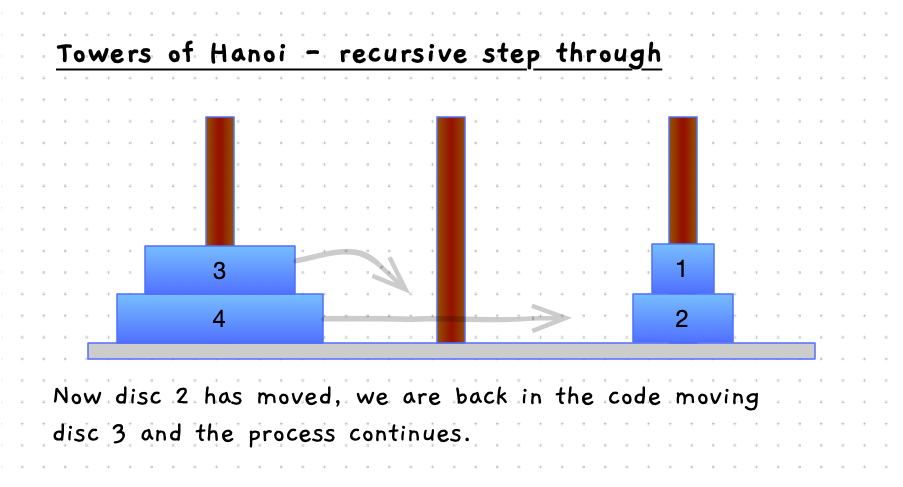Building the Towers of Hanoi
The Towers of Hanoi is a puzzle involving moving discs between three poles. The rules are:
- You must move all discs from pole 1 to pole 3.
- You can only move one disc at a time.
- Larger discs cannot be placed upon smaller ones.
- Discs cannot be moved off the poles.
The start and end states are pictured in the image below.
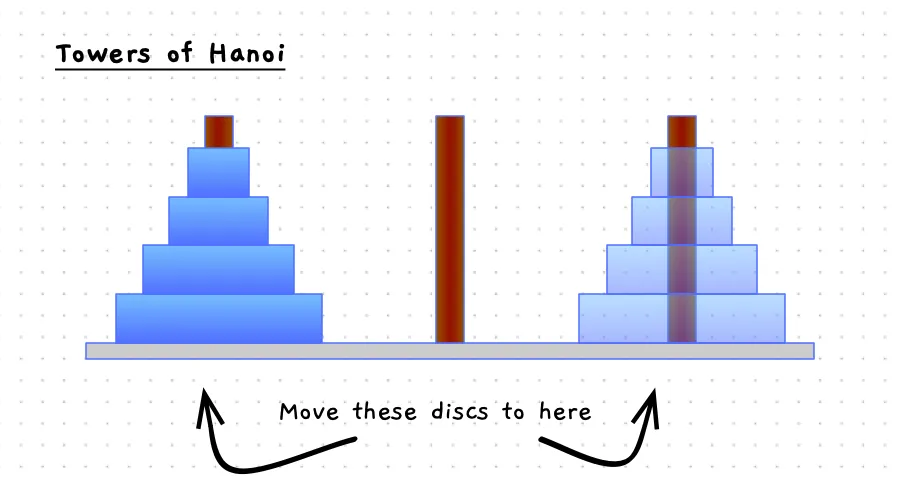
Have a think about how to solve this, then we can think about how to build a program that will solve this for any given number of discs.
The following slider will step you through the solution to this when there are four discs on the starting pole. With 4 discs we need 15 moves to get the discs to the destination pole.
Recursive Solution
The recursive solution to this problem is quite elegant, with the bulk of the movements taken care of with only three lines of code! The secret is to think from the bottom up, and focus on only moving a single disc.
Have a look at the details in the following images. When you move the bottom disc, the steps involved are:
- Move the discs above the current disc from pole 1 to pole 2, using pole 3 as the other pole.
- Move the disc to pole 3.
- Then, move the discs that were above the current disc from the pole 2, to pole 3.
Thinking this through
If you look at this, we can rename the poles to be from_pole, destination_pole, and other_pole. To start, we move the largest disc (4 in our example) from pole 1 (from_pole) to pole 3 (destination_pole) with pole 2 as the other_pole. Then the more general steps are:
- Move
disc - 1from thefrom_poleto theother_pole, using thedestination_poleas a temporary holding area. - Move
discfromfrom_poletodestination_pole. - Then, move
disc - 1from theother_pole, todestination_pole, using thefrom_poleas a temporary holding area.
The following set of images will step you some way through this process. The grey arrows show the steps that are still in progress - these will be stack frames taking care of moving that disc. Notice how the destination switches between the different poles as you progress up from the bottom disc to the top, this is how the algorithm is taking care of selecting which pole should be used when.
In our case the base case will be when we get to disc 0 - there is no disc 0, so it can just return to the caller.
Coding this up
Here is some starter code to get you started with this. Have a go at implementing this yourself. Then test it out with 4 discs and follow through with the first set of images from this page. You should be able to see all the steps that need to be taken printing out.
#include "splashkit.h"
using std::to_string;
/** * Move the indicated disc from one pole to another - using the other pole as a temporary holding area. * * @param n the disc number to move * @param from_pole the number of the pole to move from * @param destination_pole the number of the pole to move to * @param other_pole the number of the temporary holding pole */void move_disc(int disc, int from_pole, int destination_pole, int other_pole){ // Move `disc` from `from_pole` to `destination_pole`. write_line("Move disc " + to_string(disc) + " from pole " + to_string(from_pole) + " to pole " + to_string(destination_pole));}
int main(){ int n = 3; // Number of discs int from_pole = 1; int destination_pole = 3; int other_pole = 2;
// Move the discs using the Tower of Hanoi algorithm move_disc(n, from_pole, destination_pole, other_pole);
return 0;}Have a go at implementing this yourself. Remember to check for the base case, and to implement the recursive path on a different path.
- /*** Move the indicated disc from one pole to another - using the other pole as a temporary holding area.** @param n the disc number to move* @param from_pole the number of the pole to move from* @param destination_pole the number of the pole to move to* @param other_pole the number of the temporary holding pole*/void move_disc(int disc, int from_pole, int destination_pole, int other_pole){// Base case: no discs to moveif ( disc <= 0 ) return;// Move `disc - 1` from the `from_pole` to the `other_pole`, using the `destination_pole` as a temporary holding area.move_disc(disc - 1, from_pole, other_pole, destination_pole);// Move `disc` from `from_pole` to `destination_pole`.write_line("Move disc " + to_string(disc) + " from pole " + to_string(from_pole) + " to pole " + to_string(destination_pole));// Then, move `disc - 1` from the `other_pole`, to `destination_pole`.move_disc(disc - 1, other_pole, destination_pole, from_pole);}
When you have this working, try it with different numbers of discs.
